Harvey Mudd Alumni Association Announces 2021 Outstanding Alumni
April 22, 2021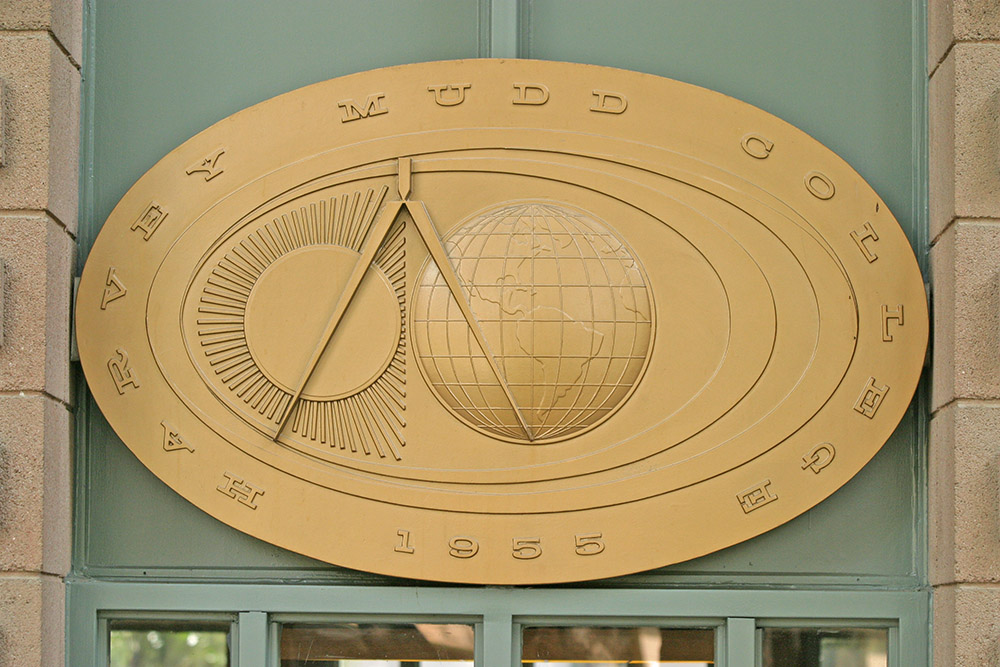
As part of its annual awards, the Harvey Mudd College Alumni Association Board of Governors (AABOG) has announced the recipients of the 2021 Outstanding Alumni Award, which recognizes impact on Harvey Mudd College as well as service to society.
The board of governors selected seven Outstanding Alumni. Given from alumni to alumni, the award recognizes individuals who have made a sustained and effective commitment to improving society and who best exemplify the mission of Harvey Mudd College.
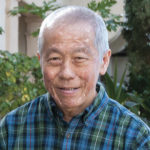 An entrepreneur and founder of multiple nonprofits, Sherman Chan ’76 (engineering) is recognized for his community service—including work with the autistic community—and for his professional work on power system modeling and analysis tools for protective relaying. He created Advanced Systems for Power Engineering (ASPEN) Inc. to provide software to electric utilities that ensures their generation and transmission assets are protected from short circuits. His contributions to power system modeling and analysis tools for protective relaying were recognized by IEEE, of which he is a Fellow. Among the nonprofits he’s established are an art school, Wings Learning Center for students with autism and Rident Park, an independent living community in Sonoma County for autistic adults.
An entrepreneur and founder of multiple nonprofits, Sherman Chan ’76 (engineering) is recognized for his community service—including work with the autistic community—and for his professional work on power system modeling and analysis tools for protective relaying. He created Advanced Systems for Power Engineering (ASPEN) Inc. to provide software to electric utilities that ensures their generation and transmission assets are protected from short circuits. His contributions to power system modeling and analysis tools for protective relaying were recognized by IEEE, of which he is a Fellow. Among the nonprofits he’s established are an art school, Wings Learning Center for students with autism and Rident Park, an independent living community in Sonoma County for autistic adults.
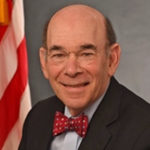 Bob Charrow ’66 (physics) is recognized for advancing health care and for science advocacy. In January 2018, he became the general counsel of the U.S. Department of Health and Human Services (HHS)—one of the most consequential positions in health care law—where he leads an office of more than 600 lawyers. HHS oversees the Food and Drug Administration, the National Institutes of Health, the Centers for Disease Control and Prevention, the Centers for Medicare & Medicaid Services and 24 other agencies. Previously, Charrow was deputy general counsel and principal deputy general counsel under President Reagan (second term) and President H.W. Bush, and an associate professor of law at University of Cincinnati. He helped write an influential brief relied upon by the U.S. Supreme Court in the landmark 1993 decision, Daubert v. Merrell Dow Pharmaceuticals, which set standards for the admissibility of scientific evidence at federal trial. He is author of the text Law in the Laboratory.
Bob Charrow ’66 (physics) is recognized for advancing health care and for science advocacy. In January 2018, he became the general counsel of the U.S. Department of Health and Human Services (HHS)—one of the most consequential positions in health care law—where he leads an office of more than 600 lawyers. HHS oversees the Food and Drug Administration, the National Institutes of Health, the Centers for Disease Control and Prevention, the Centers for Medicare & Medicaid Services and 24 other agencies. Previously, Charrow was deputy general counsel and principal deputy general counsel under President Reagan (second term) and President H.W. Bush, and an associate professor of law at University of Cincinnati. He helped write an influential brief relied upon by the U.S. Supreme Court in the landmark 1993 decision, Daubert v. Merrell Dow Pharmaceuticals, which set standards for the admissibility of scientific evidence at federal trial. He is author of the text Law in the Laboratory.
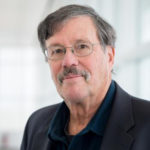 Considered one of the world’s experts of synchrotron radiation X-ray source technology, Bob Hettel ’71 (physics) has made many contributions to science and technology. At Argonne National Laboratory since 2017, Hettel oversees the planning, construction and implementation of the Advanced Photon Source Upgrade, an $815 million project that will create a world-leading three-dimensional hard X-ray microscope using advanced electron storage ring technology that will enable researchers to view and manipulate matter at the atomic level to solve complex science problems across multiple disciplines. He is a veteran accelerator designer and expert on storage-ring light sources, arriving at Argonne after nearly 40 years at the SLAC National Accelerator Laboratory, a U.S. Department of Energy Office of Science Laboratory that includes the Stanford Synchrotron Radiation Lightsource (SSRL) for which he was technical director of the SPEAR3 storage ring upgrade. After many years with SSRL, he became deputy associate lab director for SLAC accelerators and the acting head of the lab’s Accelerator Research Division, where he helped launch SLAC’s ultra-fast electron diffraction and microscopy program. In addition to the honor of receiving the Brown Award in 1971 for his senior thesis on the physical properties of tachyons (with Professor Tom Helliwell), Hettel says he is forever grateful to HMC “for being taught not what to think but how to think.”
Considered one of the world’s experts of synchrotron radiation X-ray source technology, Bob Hettel ’71 (physics) has made many contributions to science and technology. At Argonne National Laboratory since 2017, Hettel oversees the planning, construction and implementation of the Advanced Photon Source Upgrade, an $815 million project that will create a world-leading three-dimensional hard X-ray microscope using advanced electron storage ring technology that will enable researchers to view and manipulate matter at the atomic level to solve complex science problems across multiple disciplines. He is a veteran accelerator designer and expert on storage-ring light sources, arriving at Argonne after nearly 40 years at the SLAC National Accelerator Laboratory, a U.S. Department of Energy Office of Science Laboratory that includes the Stanford Synchrotron Radiation Lightsource (SSRL) for which he was technical director of the SPEAR3 storage ring upgrade. After many years with SSRL, he became deputy associate lab director for SLAC accelerators and the acting head of the lab’s Accelerator Research Division, where he helped launch SLAC’s ultra-fast electron diffraction and microscopy program. In addition to the honor of receiving the Brown Award in 1971 for his senior thesis on the physical properties of tachyons (with Professor Tom Helliwell), Hettel says he is forever grateful to HMC “for being taught not what to think but how to think.”
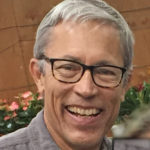
Greg Lyzenga ’75 (physics), Burton Bettingen Professor of Physics at Harvey Mudd College, is celebrating 50 years since first becoming a part of the HMC community, when he was admitted to the Class of 1975. He has taught physics to generations of Harvey Mudd students and worked with them on numerous research projects. He conducts both theoretical and observational studies of the physical processes that lead to earthquakes and tectonic deformation. He uses the Global Positioning System (GPS) to measure the movement of land along fault lines to determine the amount of strain on these faults before earthquakes and the alteration of the earth afterwards. He has published extensively in the area of modeling tectonic plate movement. Before becoming a faculty member at Harvey Mudd in 1990, Lyzenga worked at NASA’s Jet Propulsion Laboratory on the development and interpretation of space-based geodetic techniques. In 2012, he and fellow collaborators received the NASA Software of the Year Award for QuakeSim, a comprehensive software tool for simulating and understanding earthquake fault processes and improving earthquake forecasting. The tool is accessible to a broad range of scientists and end users, including emergency responders, commercial disaster companies, the insurance industry and civil engineers.
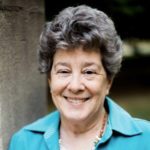 Catherine “Caty” Anderson Pilachowski ’71 (physics) has made distinguished contributions to stellar astrophysics and to the astronomical community. She spent 22 years as an astronomer with the National Optical Astronomy Observatory (NOAO) before joining Indiana University in 2001 as professor and the inaugural Daniel Kirkwood Chair in the Department of Astronomy. Pilachowski was the first to recognize the importance of comparing the chemical compositions among large numbers of clusters and large numbers of stars within individual clusters. She also was instrumental to the realization of the Wisconsin-Indiana-Yale-NOAO 3.5-m telescope and contributed to the international Gemini Observatory project. Active in the areas of astronomical instrumentation, large telescope design and construction, electronic publications, women in science, and astronomy education, Pilachowski has published over 330 papers and her research has received over $1.7 million in funding. She has served on numerous national and international committees and boards, including Instituto de Astrofisica de Canaris. She was president of the American Astronomical Society (2002–2004), and she is a Fellow of that organization as well as of the American Association for the Advancement of Science. In September 2020, Pilachowski received the IU Bicentennial Medal in recognition of her distinguished contributions to Indiana University.
Catherine “Caty” Anderson Pilachowski ’71 (physics) has made distinguished contributions to stellar astrophysics and to the astronomical community. She spent 22 years as an astronomer with the National Optical Astronomy Observatory (NOAO) before joining Indiana University in 2001 as professor and the inaugural Daniel Kirkwood Chair in the Department of Astronomy. Pilachowski was the first to recognize the importance of comparing the chemical compositions among large numbers of clusters and large numbers of stars within individual clusters. She also was instrumental to the realization of the Wisconsin-Indiana-Yale-NOAO 3.5-m telescope and contributed to the international Gemini Observatory project. Active in the areas of astronomical instrumentation, large telescope design and construction, electronic publications, women in science, and astronomy education, Pilachowski has published over 330 papers and her research has received over $1.7 million in funding. She has served on numerous national and international committees and boards, including Instituto de Astrofisica de Canaris. She was president of the American Astronomical Society (2002–2004), and she is a Fellow of that organization as well as of the American Association for the Advancement of Science. In September 2020, Pilachowski received the IU Bicentennial Medal in recognition of her distinguished contributions to Indiana University.
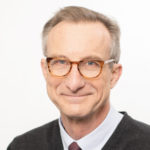 Warren Rogers ’81 (physics), professor and Blanchard Endowed Chair of Physics at Indiana Wesleyan University, was the 2018 recipient of the American Physical Society’s Prize for a Faculty Member for Research in an Undergraduate Institution, an award he also received in 2009. Rogers has contributed substantially to the professional development of undergraduate students, and his research in an undergraduate setting has achieved wide recognition and contributed significantly to physics. Rogers is an expert in the exploration of atomic nuclei beyond the neutron drip line and is highly praised for his conception and continued leadership of the Conference Experience for Undergraduate program. He is a Fellow of the American Physical Society.
Warren Rogers ’81 (physics), professor and Blanchard Endowed Chair of Physics at Indiana Wesleyan University, was the 2018 recipient of the American Physical Society’s Prize for a Faculty Member for Research in an Undergraduate Institution, an award he also received in 2009. Rogers has contributed substantially to the professional development of undergraduate students, and his research in an undergraduate setting has achieved wide recognition and contributed significantly to physics. Rogers is an expert in the exploration of atomic nuclei beyond the neutron drip line and is highly praised for his conception and continued leadership of the Conference Experience for Undergraduate program. He is a Fellow of the American Physical Society.
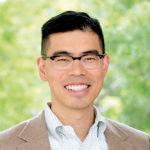 Darryl Yong ’96 (mathematics and music), professor of mathematics at Harvey Mudd College, is making significant contributions to society through his mathematics instruction and his work to improve the quality of math education throughout the Los Angeles region. He began as a visiting professor at Harvey Mudd (2000–2001) while teaching at California Institute of Technology then joined the HMC faculty full-time in 2003. His primary research area is in mathematics education, specifically in the recruitment, training and professional development of highly skilled secondary school mathematics teachers through the Math for America Los Angeles program, which Yong co-founded. An accomplished author (six books) and mathematician, his other research interests include asymptotic analysis, numerical analysis and applied mathematics. Yong served as the College’s associate dean for diversity and was the inaugural interim director of The Claremont Colleges’ Center for Teaching and Learning. He’s received several awards for community service and teaching, including the 2020 American Mathematical Society Award for Impact on the Teaching and Learning of Mathematics.
Darryl Yong ’96 (mathematics and music), professor of mathematics at Harvey Mudd College, is making significant contributions to society through his mathematics instruction and his work to improve the quality of math education throughout the Los Angeles region. He began as a visiting professor at Harvey Mudd (2000–2001) while teaching at California Institute of Technology then joined the HMC faculty full-time in 2003. His primary research area is in mathematics education, specifically in the recruitment, training and professional development of highly skilled secondary school mathematics teachers through the Math for America Los Angeles program, which Yong co-founded. An accomplished author (six books) and mathematician, his other research interests include asymptotic analysis, numerical analysis and applied mathematics. Yong served as the College’s associate dean for diversity and was the inaugural interim director of The Claremont Colleges’ Center for Teaching and Learning. He’s received several awards for community service and teaching, including the 2020 American Mathematical Society Award for Impact on the Teaching and Learning of Mathematics.
